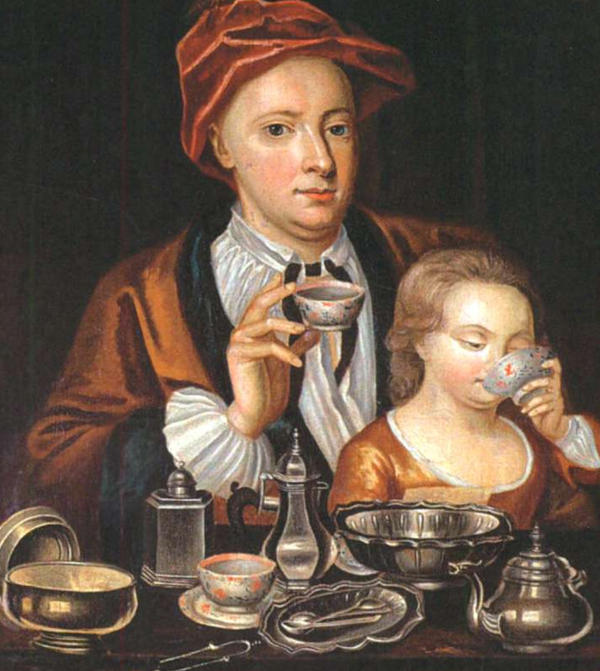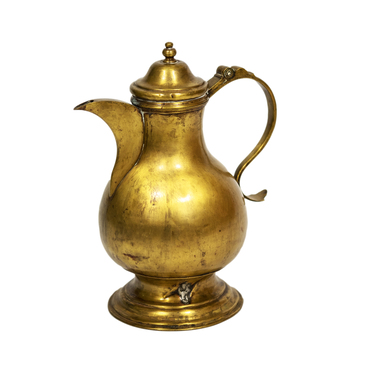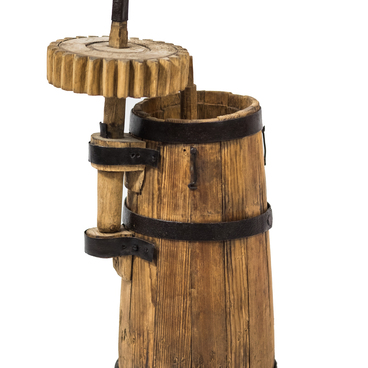A manual table mill could be used to grind not only coffee beans, but also pepper, cereals, and various spices. The grinder exhibited at the Nevyansk Historical and Architectural Museum was made in the early 20th century. It has the shape of a cube with protruding upper and lower bases. Inside of it there are two steel cutters, which served as miniature millstones. One cutter always remained stationary, while the other was set in motion by rotating the handle of the device. In the upper base of the cube there is a hole through which the grains were poured inside. Half of it is covered by a metal semisphere. The ground coffee beans fell into the wooden drawer at the bottom of the cube. The sides and drawer of the mill are decorated along the perimeter with stamped relief stripes with canted corners. There are no marks or writings on the item.
Manual grinder
Время создания
Early 20th century
Размер
14 cm х 14 cm х 18 cm
Техника
Stamping, turning
Коллекция
8
Открыть в приложении#1
Manual table grinder for coffee beans
#7
#8
#10
Devices of this type were the most popular hand grinders in Russia. The blades for them could be made of metal, for example, cast iron, or ceramics. The first option was stronger and more durable, but the second did not affect the taste of the coffee beans: the ceramic blades heated up less during operation and remained completely inert, that is, did not enter into a chemical reaction with coffee.
#12
In Russia, the coffee trend was introduced by Emperor Peter the Great, who took a liking to it in Holland, during the Grand Embassy trip across Europe in 1697. Since 1718, not a single Peter’s Assembly, which was a noble ball, took place without coffee. The Russian aristocracy followed the new tradition without much enthusiasm: coffee was expensive and bitter. Over time, they began to add cream and sugar to it to soften the unusual taste. Various desserts and light snacks were served with coffee.
#13
The tradition of drinking morning coffee
#16
In 1724, ordered by Peter the Great, taverns for foreigners were opened in the capital, serving coffee, among other offerings. The first real coffee shop appeared in Saint Petersburg in 1740. At that time, coffee houses were kept by people from Germany, England, the Netherlands, and other European countries.
#17
State Autonomous Cultural Institution of the Sverdlovsk Region "Nevyansk State Historical and Architectural Museum"
читать дальшескрыть
00:00
00:00
1x
Manual grinder
Время создания
Early 20th century
Размер
14 cm х 14 cm х 18 cm
Техника
Stamping, turning
Коллекция
8
Открыть в приложении
Поделиться


